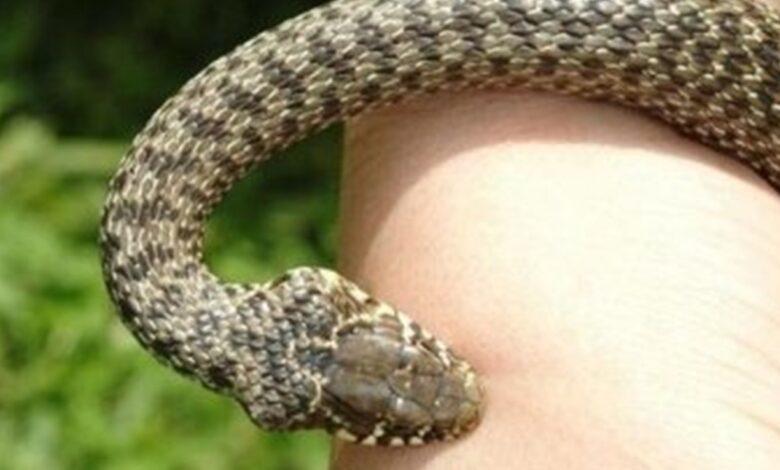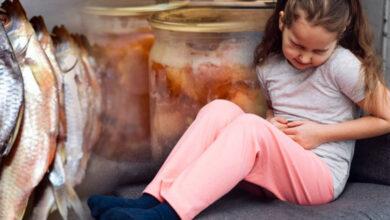Snake season during war: in June, natural threats become part of children’s safety in Ukraine

The summer season brings an additional threat to children living in the realities of war – snake bites. June is the beginning of the season of increased activity of reptiles. Due to warming, changes in ecosystems, the approach of people to natural areas and the general change of the habitat during the war, cases of encounters between people and snakes are recorded more and more often. For children, this creates another risk factor for which families are often unprepared. One such situation occurred in the village of Novoivnytskyi, Zhytomyr region, when an 8-year-old boy was bitten by a viper.
The case in Zhytomyr Oblast
The boy’s family moved to this settlement about a year ago, looking for a safer place to live during the war. The child’s mother is a military servicewoman who is on maternity leave. For her in words, the area seemed safe, so the threat in the form of snakes was unexpected for the family. The incident happened near a bus stop. The child discovered the snake and took it in his hands, not realizing the danger. The bite itself took place after contact.
After the bite, the boy was rushed to the hospital. At the time of transportation, typical symptoms of poisoning began to appear: swelling of the hand, itching, discomfort in the throat. Already at the hospital, it became known that the bite was caused by a Nikolsky viper, a poisonous snake common in the forest and forest-steppe zones of Ukraine. According to the doctors, the boy was somewhat lucky: the female viper turned out to be pregnant, and during this period the amount of toxin in her bite may be lower. However, the child was admitted to the intensive care unit and during treatment received supportive therapy: intravenous solutions, drugs to stabilize the body, maintain the water-salt balance and blood.
The key problem that doctors have to face is the lack of antidotes to snake venom in Ukraine. An antidote to the viper exists, but its procurement in Ukraine is very limited or non-existent. Therefore, doctors are forced to act symptomatically: control the condition of the blood, prevent allergic reactions, stabilize the child’s condition until the moment when the toxin is naturally removed from the body.
Poisonous snakes in June and safety measures
The problem of poisonous snakes in Ukraine is not new, but in wartime conditions it reaches a new level. Firstly, due to the mass displacement of the population, many families find themselves in rural areas where they have not lived before and do not know the local features of wildlife. Secondly, a significant part of minefields, abandoned positions, destruction of infrastructure change ecosystems, forcing reptiles to migrate closer to residential areas. Third, due to the additional burden on the health care system in wartime, there is often a shortage of specific drugs and specialized medical care.
In June, the activity of vipers, snakes, copperheads and other species increases due to seasonal warming. For a child, any encounter with a snake is potentially dangerous, even if it is not a poisonous species. Trying to pet, pick up, or catch a snake is a typical impulse of a child who is unaware of the risk. Even adults often have no idea about behavior when meeting snakes, and children even more so.
That is why, in summer and wartime, it is important for parents to know about this problem and to have preventive conversations with their children in advance. Explain that snakes do not seek contact with people, but can defend themselves when trying to approach. Explain that there should be no attempt to catch, touch or chase the snakes. Teach children to call an adult immediately if they see a snake nearby. It is also worth emphasizing: if the child was bitten, do not delay in calling the medics, do not make independent attempts to remove the poison, cut the wound or cauterize the bite site.
In addition, parents should take into account several practical measures that will help reduce risks:
Open play areas for children should be arranged on cleared sites, without tall grass, thick bushes, piles of garbage, branches or firewood.
For walks in forest or field areas, children should wear closed shoes, long pants and preferably with closed sleeves.
In areas where viper activity is recorded, you should avoid walking barefoot, especially in the evening and early morning, when snakes may be inconspicuous.
When resting near the water, you should inspect the places where the child sits or lies down, especially near stones, snags or bushes.
It is important for adults to know the phone numbers of local medical facilities that can provide assistance in case of bites.
It is worth remembering that the main cause of severe consequences is not the fact of the bite itself, but the delay in seeking medical help or the wrong first reaction.
For children living in a war zone, these new natural risks become an additional background to everyday threats. Ukrainian families now live in a situation where, in addition to air raids, threats of shelling, and psychological trauma, there are also quite real everyday environmental hazards. Snakes are just one such threat, but early awareness and basic knowledge help minimize risks.





